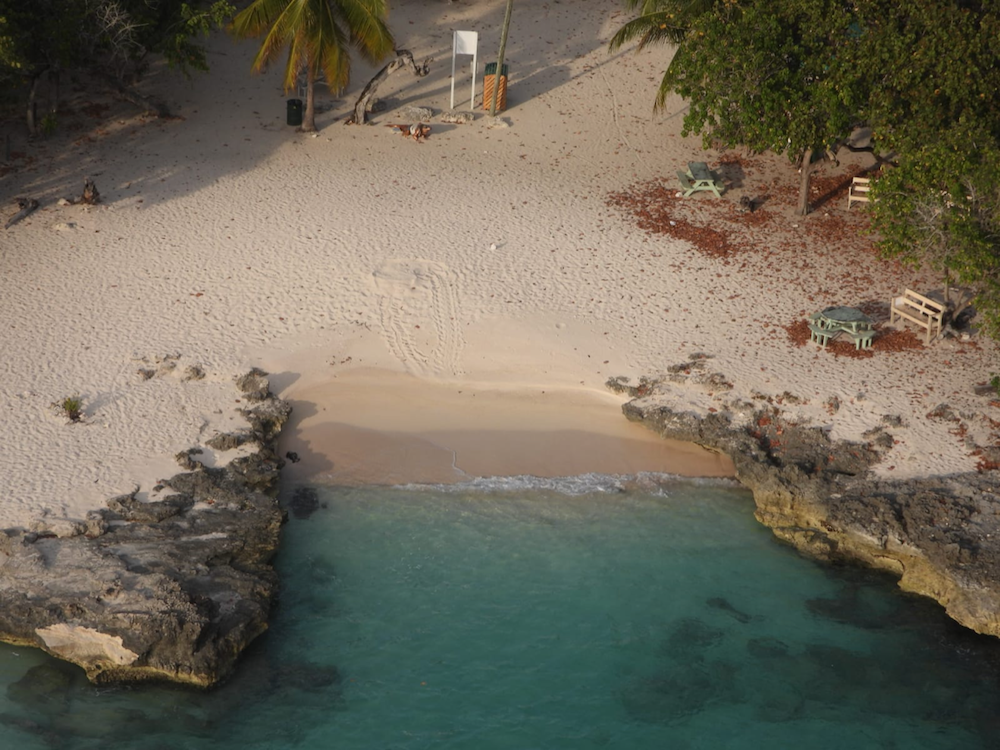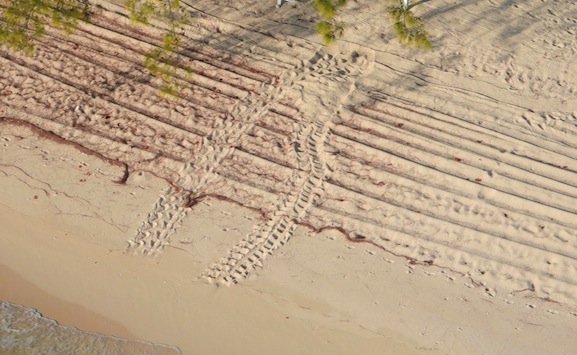Cayman: RCIPS assists DOE with monitoring sea turtle nesting sites

Since last month, the RCIPS has been assisting the Department of Environment with their monitoring of turtle nesting sites during the sea turtle nesting season, which began on 1 May across all three islands.
The Department of Environment’s sea turtle conservation programme has been in operation for the past 21 years. However, COVID-19 restrictions this year meant that the Department of Environment couldn’t call on the over 70 volunteers who usually assist them in identifying and mapping turtle tracks and nests. So the DOE turned to the RCIPS for assistance.
Exemptions were granted for a limited number of Department of Environment staff to monitor beaches in close communication with the RCIPS. Meanwhile, crews from the RCIPS Air Operations Unit have been keeping an eye out for the telltale signs of turtle nesting during their daily security patrols with the police helicopter.
“In the first two weeks, our crews identified in excess of fifteen turtle nests on beaches that had no foot traffic, a rare sight,” said Steve Fitzgerald, Executive Officer of the Air Operations Unit. “This allowed our colleagues in the Department of Environment to target their resources to the protection of these sites and start monitoring.”
Once the sites were identified, the RCIPS ATV beach patrols were also tasked to assist in ensuring the safety of the nests.
“We found sites across the whole Island, and in some locations that turtles would not have probably been seen for a long time. The most spectacular find was one in Smith Cove, where the distinctive tracks led into the middle of the beach,” said Steve Fitzgerald.
“It appears that the lack of human activity on beaches may have affected nest distribution, allowing turtles to nest in areas where there is typically too much disturbance,” said Dr. Janice Blumenthal, a research officer in the DoE’s Marine Resources Unit. “This was a unique opportunity to monitor turtle nesting during lockdown.”
Information on the locations of specific nests is also used by the DOE to protect nesting turtles, turtle nests, and hatchling turtles from threats during each nesting season. These threats include poaching of nesting females and eggs, operation of vehicles and heavy equipment on nesting beaches, beach bonfires, and artificial lighting.
“In addition to being a monitoring programme that is entering its third decade, our sea turtle conservation programme is essential for the conservation of endangered Cayman Islands sea turtle nesting populations,” Dr. Blumenthal added. “We are very grateful to the RCIPS for assisting with the continuation of these efforts.”







